#technologicalinnovation
Text
Point of Sale (POS) Terminals Market Outlook Report 2024-2030: Trends, Strategic Insights, and Growth Opportunities | GQ Research
The Point of Sale (POS) Terminals Market is set to witness remarkable growth, as indicated by recent market analysis conducted by GQ Research. In 2023, the global Point of Sale (POS) Terminals Market showcased a significant presence, boasting a valuation of US$ 139.43 billion. This underscores the substantial demand for Acetophenone technology and its widespread adoption across various industries.
Get Sample of this Report at: https://gqresearch.com/request-sample/global-point-of-sale-pos-terminals-market/

Projected Growth: Projections suggest that the Point of Sale (POS) Terminals Market will continue its upward trajectory, with a projected value of US$ 248.4 billion by 2030. This growth is expected to be driven by technological advancements, increasing consumer demand, and expanding application areas.
Compound Annual Growth Rate (CAGR): The forecast period anticipates a Compound Annual Growth Rate (CAGR) of 8.6%, reflecting a steady and robust growth rate for the Point of Sale (POS) Terminals Market over the coming years.
Technology Adoption:
In the Point of Sale (POS) Terminals Market, technology adoption involves the integration of advanced hardware and software solutions for processing retail transactions. POS terminals are equipped with features such as barcode scanners, touchscreens, NFC (Near Field Communication) readers, and EMV (Europay, Mastercard, Visa) chip card readers to facilitate secure and efficient payment processing. Additionally, cloud-based POS software solutions enable real-time inventory management, sales reporting, and customer relationship management (CRM) functionalities, enhancing overall business operations.
Application Diversity:
The Point of Sale (POS) Terminals Market serves diverse applications across retail sectors such as hospitality, food service, healthcare, entertainment, and e-commerce. In the hospitality industry, POS terminals are used in restaurants, cafes, and hotels for order processing, table management, and payment acceptance. In food service, POS terminals facilitate quick-service and fast-food operations, enabling efficient order taking, customization, and payment processing. Additionally, POS solutions are utilized in healthcare settings for patient billing, appointment scheduling, and electronic medical records (EMR) integration.
Consumer Preferences:
Consumer preferences in the Point of Sale (POS) Terminals Market are influenced by factors such as transaction speed, security, ease of use, and compatibility with payment methods. Retailers prioritize POS terminals that offer fast transaction processing times, reducing wait times for customers and improving overall efficiency at checkout. Additionally, consumers value POS systems with robust security features such as end-to-end encryption, tokenization, and PCI (Payment Card Industry) compliance to protect sensitive payment data from cyber threats. Moreover, POS terminals that support a wide range of payment methods including credit/debit cards, mobile wallets, and contactless payments are preferred by both merchants and consumers for their convenience and flexibility.
Technological Advancements:
Technological advancements in the Point of Sale (POS) Terminals Market focus on improving transaction security, user experience, and integration capabilities through innovations in hardware, software, and connectivity solutions. Research efforts aim to develop biometric authentication features such as fingerprint scanning or facial recognition to enhance POS terminal security and prevent unauthorized access. Additionally, advancements in software development enable POS systems to offer personalized customer experiences, loyalty program integration, and predictive analytics for targeted marketing campaigns. Moreover, integration with emerging technologies such as AI (Artificial Intelligence), IoT (Internet of Things), and blockchain enhances POS terminal functionalities and enables seamless integration with other business systems.
Market Competition:
The Point of Sale (POS) Terminals Market is characterized by intense competition among POS hardware manufacturers, software developers, payment processors, and solution providers, driven by factors such as technology innovation, product reliability, pricing, and customer service. Major players leverage their brand reputation, distribution networks, and strategic partnerships to maintain market leadership and gain competitive advantage. Meanwhile, startups and niche players differentiate themselves through specialized POS solutions tailored to specific industry verticals, such as retail, hospitality, or healthcare. Additionally, mergers, acquisitions, and strategic alliances are common strategies for companies to expand market presence and enhance product offerings in the competitive POS Terminals Market.
Environmental Considerations:
Environmental considerations are increasingly important in the Point of Sale (POS) Terminals Market, with stakeholders focusing on energy efficiency, material sustainability, and e-waste management. Manufacturers strive to develop energy-efficient POS hardware solutions that consume less power and minimize environmental impact during operation. Additionally, efforts are made to use recycled materials and eco-friendly components in POS terminal manufacturing to reduce carbon footprint and promote sustainable practices. Moreover, initiatives such as product recycling programs, extended product lifespan, and responsible disposal practices contribute to minimizing electronic waste and promoting circular economy principles in the POS Terminals Market.
Top of Form
Regional Dynamics: Different regions may exhibit varying growth rates and adoption patterns influenced by factors such as consumer preferences, technological infrastructure and regulatory frameworks.
Key players in the industry include:
Acumera Inc.
Hewlett Packard Development LP
Ingenico Group
NCR Corporation
Oracle Corporation
Presto Group
PAX Technology Inc.
Square Inc.
Toshiba Corporation
Verifone Systems Inc.
The research report provides a comprehensive analysis of the Point of Sale (POS) Terminals Market, offering insights into current trends, market dynamics and future prospects. It explores key factors driving growth, challenges faced by the industry, and potential opportunities for market players.
For more information and to access a complimentary sample report, visit Link to Sample Report: https://gqresearch.com/request-sample/global-point-of-sale-pos-terminals-market/
About GQ Research:
GQ Research is a company that is creating cutting edge, futuristic and informative reports in many different areas. Some of the most common areas where we generate reports are industry reports, country reports, company reports and everything in between.
Contact:
Jessica Joyal
+1 (614) 602 2897 | +919284395731
Website - https://gqresearch.com/
0 notes
Text


From Bubble to Cage: Hans Hollein's Architectural Journey and the Necessity of Security in Assessing Rome
Hans Hollein's conceptual journey from the transparent bubble mobile office to the gilded bird cage reflects not only a transformation in architectural vision but also a profound commentary on societal shifts and the complexities of modern work environments. Initially, with his proposal of the transparent bubble mobile office, Hollein epitomized the optimism of the 1960s, envisioning a future where technology would liberate individuals from the confines of traditional workplaces. This vision celebrated freedom and flexibility, allowing professionals to work from any location, untethered by the constraints of a fixed office space. However, as time progressed and societal dynamics evolved, Hollein's perspective seemed to adapt to a more nuanced understanding of the implications of technological advancement. The transition to conceptualizing the mobile office as a gilded bird cage suggests a maturation of thought, recognizing that while technological innovation offers unprecedented opportunities for mobility and connectivity, it also presents new challenges and complexities. The metaphor of the gilded cage evokes the idea of luxury and comfort juxtaposed with limited freedom. In the context of remote work and digital environments, the gilded cage represents the paradox of working from home—a space that offers convenience and comfort but may also impose constraints on personal freedom and creativity. Moreover, the symbolism of the barn swallow, Austria's national bird, adds another layer of significance to Hollein's narrative. The barn swallow, known for its migratory nature and adaptability to various environments, serves as a poignant symbol of mobility and resilience. The choice to echo the barn swallow in this image reflects an awareness of the need for architects to adapt to changing landscapes and embrace innovative solutions while remaining grounded in cultural identity and heritage. Furthermore, the reference to a proposed Pantheon bird cage and the historical significance of symbols like the aquila and the eagle, adds another layer of depth to Hollein's narrative. The Pantheon, with its architectural marvels and historical significance, serves as a reminder of the enduring legacy of Rome and the importance of preserving cultural heritage. The symbolism of the aquila, representing imperial rule and military honour, underscores the timeless human quest for security and protection, both physically and ideologically. In the context of assessing Rome, the necessity of security for the architect becomes paramount. Just as the Roman legionaries went to great lengths to protect their standards, architects today must navigate a complex landscape of competing priorities, balancing the preservation of cultural heritage with the need for innovation and adaptation. Hollein's evolution from envisioning a transparent bubble mobile office to conceptualizing of it as a gilded bird cage reflects this ongoing tension between tradition and progress, security and freedom, reminding us of the enduring relevance of historical context in shaping contemporary architectural discourse.
#ArchitecturalEvolution#HansHollein#WorkEnvironment#TechnologicalInnovation#CulturalHeritage#Security#Rome#ArchitecturalHistory#RemoteWork#DigitalAge#BarnSwallow#Austria#architecture#berlin#area#london#acme#chicago#puzzle#edwin lutyens#massimoscolari#oma
0 notes
Text
Jamie Dimon Warns of Recession: Be Prepared for Economic Instability
#consumerspending #COVID19pandemic #economicinstability #financialindustry #geopoliticaltensions #globaleconomyslowdown #highlevelsofdebt #investors #JamieDimon #JPMorganChase #longtermprospectsforUSeconomy #marketanalysts #marketsentiment #precautionsagainstrecession #prudenceandpreparation. #recessionwarning #significanceofDimonswarning #technologicalinnovation #unemploymentrates #upcomingpresidentialelection #vigilanceandcaution
#Business#consumerspending#COVID19pandemic#economicinstability#financialindustry#geopoliticaltensions#globaleconomyslowdown#highlevelsofdebt#investors#JamieDimon#JPMorganChase#longtermprospectsforUSeconomy#marketanalysts#marketsentiment#precautionsagainstrecession#prudenceandpreparation.#recessionwarning#significanceofDimonswarning#technologicalinnovation#unemploymentrates#upcomingpresidentialelection#vigilanceandcaution
0 notes
Text
Mayorkas Stresses Unity at Munich Cyber Conference

Public and Private Sectors Unite for Cybersecurity
In an era where the digital revolution's pace is only matched by the escalating cyber threats, Secretary Mayorkas' keynote at the Munich Cyber Security Conference in Munich, Germany, could not have been more timely. Addressing a broad audience of technologists, policymakers, and cybersecurity professionals, Mayorkas laid out a vision for a united front against the cyber challenges of our time.
Moreover, his address underscored the importance of collaboration between the public and private sectors, marking a pivotal moment in the global dialogue on cybersecurity.
The Evolving Cyber Landscape
Reflecting on the digital utopia envisioned by early internet pioneers, Mayorkas acknowledged the stark reality of today's cyber environment. The dream of an unregulated, boundless cyberspace has given way to a landscape where cyber threats loom large over every aspect of society. From the crippling effects of ransomware on critical infrastructure to the destabilizing efforts of foreign adversaries, the Secretary painted a vivid picture of the challenges we face.
Yet, amidst these threats, he highlighted the transformative potential of technologies like artificial intelligence, urging for a balanced approach to innovation and security.
A Call for a Cyber-Social Compact
Central to Mayorkas' address was the concept of a "cyber-social compact," a framework for shared responsibility in cybersecurity. He argued for a model that transcends the dichotomy of regulation versus innovation, emphasizing the need for a harmonious integration of security measures into the fabric of technological development. This compact calls for burden-sharing, where both the risks and responsibilities of cybersecurity are distributed more equitably among stakeholders.
Secure by Design
Mayorkas emphasized the principle of "Secure by Design," urging companies to embed security considerations in the early stages of product development. This approach urges companies to prioritize resilience over rapid profitability, ensuring that products incorporate inherent security measures to protect users from emerging threats.
Baselining Security Standards
The Secretary also proposed the establishment of minimum security standards, a collaborative effort between the government and the private sector to define a baseline of cybersecurity requirements. This initiative aims to alleviate the burden on individual consumers, many of whom lack the expertise to navigate the complex landscape of cyber threats. By setting a foundational level of security, the entire ecosystem stands to benefit from enhanced protection against cyberattacks.
Moving at the Speed of Business
Recognizing the dynamic nature of the technology sector, Mayorkas called for regulatory agility. The goal is to create a regulatory environment that can adapt swiftly to technological advancements, ensuring that cybersecurity measures are not only effective but also timely. This approach seeks to foster innovation while safeguarding the digital ecosystem against evolving threats.
A United Front Against Cyber Threats
In conclusion, Secretary Mayorkas' address at the Munich Cyber Security Conference served as a clarion call for unity in the face of cybersecurity challenges. By advocating for a cyber-social compact, he underscored the importance of collective action and shared responsibility in securing our digital future. The message was clear: only through collaboration can we hope to protect the integrity of our cyber landscape and harness the full potential of technological innovation for the betterment of society.
The Secretary's vision for a secure, resilient digital world resonates deeply with the current cybersecurity discourse. As we move forward, the principles outlined in his address will undoubtedly shape the strategies and policies of both the public and private sectors. The path to a safer cyberspace is a shared journey, and Mayorkas' keynote has illuminated the way forward.
Sources: THX News & US Department of Homeland Security.
Read the full article
#Cyberthreats#Cyber-socialcompact#Cybersecuritychallenges#Digitalecosystem#Minimum-securitystandards#MunichCyberSecurityConference#Publicandprivatesectors#Regulatoryagility#SecurebyDesign#technologicalinnovation
0 notes
Video
Experience the incredible world of AI-generated art with mesmerizing images created by midjourney AI.
#AIart#AIgenerated#ArtificialIntelligence#CreativeAI#MindBlowingArt#DigitalArt#TechnologicalInnovation#VisualMasterpiece#AIcreativity#FutureofArt
0 notes
Text
⚒️🧱🌳𝕄𝕚𝕟𝕖𝕔𝕣𝕒𝕗𝕥 𝕒𝕤 𝕒 𝔾𝕒𝕞𝕖-𝔹𝕒𝕤𝕖𝕕 𝕃𝕖𝕒𝕣𝕟𝕚𝕟𝕘 𝕋𝕠𝕠𝕝 𝕗𝕠𝕣 𝕊𝕥𝕦𝕕𝕖𝕟𝕥𝕤!🐄⚔️💎

Hello everyone!
Today I will be introducing you with a very famous game that has been around for awhile and are suitable for all categories of ages. I present to you,

An introduction to a blocky sandbox game.
𝕊𝕠, 𝕨𝕙𝕒𝕥 𝕚𝕤 𝕄𝕚𝕟𝕖𝕔𝕣𝕒𝕗𝕥?
Minecraft is a game made up of blocks, creatures, and community. You can survive the night or build a work of art – the choice is all yours. But if the thought of exploring a vast new world all on your own feels overwhelming, then fear not! Let’s explore what Minecraft is all about!

𝕎𝕙𝕒𝕥 𝕚𝕤 𝕥𝕙𝕖 𝔾𝕠𝕒𝕝 𝕠𝕗 𝕄𝕚𝕟𝕖𝕔𝕣𝕒𝕗𝕥?
What's fun about Minecraft is that there are no set of goals and can be played however you’d like! This is why it’s sometimes called a “sandbox game” – there are lots of things for you to do, and lots of ways that you can play. If you like being creative, then you can use the blocks to build things from your imagination. If you’re feeling brave, you can explore the world and face daring challenges. Blocks can be broken, crafted, placed to reshape the landscape, or used to build fantastical creations.
Depending on how you play, you can either fight or make friends with creatures. You can have peaceful meditations, grand adventures, and everything in between in the world of Minecraft. You can even play in community worlds and share your creations with other players!
Learn more about crafting, one of Minecraft’s basic features, in this guide.
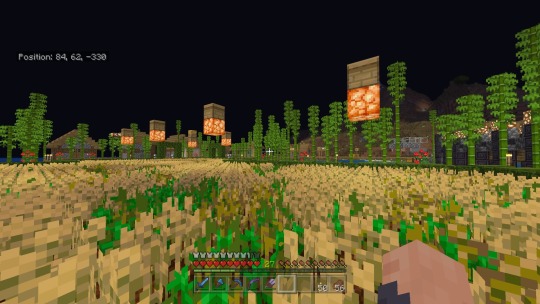
The Minecraft interface (PS4)
𝕀𝕤 𝕄𝕚𝕟𝕖𝕔𝕣𝕒𝕗𝕥 𝕍𝕚𝕠𝕝𝕖𝕟𝕥?
There are some mildly violent elements to the game because it includes combat. If playing in multiplayer mode, players can hit and defeat other players in addition to hostile and passive mobs. Nevertheless, there isn't any blood and the graphic violence is constrained by Minecraft's aesthetic.
𝕎𝕙𝕒𝕥 𝔾𝕒𝕞𝕖 𝕄𝕠𝕕𝕖𝕤 𝕒𝕣𝕖 𝕥𝕙𝕖𝕣𝕖?
The two game modes in Minecraft which are Creative and Survival mode.
In Creative mode, you can easily:
Destroy a block along with having infinite resources and the ability to fly. Most players who want to concentrate on the pure joy of using blocks to create things choose to play in this mode.
You can explore the environment, gather resources, craft, battle monsters, and earn experience points in the Survival mode.
*It takes effort and certain tools to break different blocks. Along with managing your own hunger and health, you are also constrained by gravity. *
In addition to Survival mode, "Hardcore" is a subcategory mode in Minecraft: Java Edition where you only have one life and losing it ends the game.
There are four difficulty settings for both Creative and Survival: Easy, Normal, Hard, and Peaceful. These options are largely irrelevant in Creative mode since you won't be attacked by mobs. But these difficulty levels are crucial in Survival mode! They have an impact on several aspects of the game, including the frequency of hostile mob spawns, the damage they deal, the speed at which the hunger bar fills, and the rate at which a player's health restores over time.
ℍ𝕠𝕨 𝕥𝕠 𝕘𝕖𝕥 𝕊𝕥𝕒𝕣𝕥𝕖𝕕
𝕃𝕠𝕘 𝕚𝕟 𝕨𝕚𝕥𝕙 𝕪𝕠𝕦𝕣 𝕦𝕤𝕖𝕣𝕟𝕒𝕞𝕖 𝕒𝕟𝕕 𝕡𝕒𝕤𝕤𝕨𝕠𝕣𝕕 𝕒𝕥 𝕥𝕙𝕖 𝕞𝕒𝕚𝕟 𝕞𝕖𝕟𝕦.
The launcher opens the News screen, which displays game updates and links. Enter your username and password in the lower right corner and click Log In to continue to the main menu.
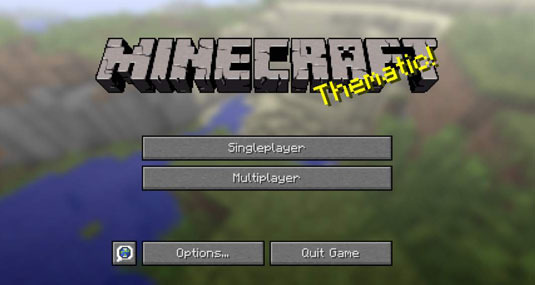
This list describes what you can do after you click the buttons on the main menu:
SinglePlayer: Start or continue a basic game. The remaining portion of this article covers the options for starting a game in SinglePlayer mode.
MultiPlayer: Join other players online.
Languages: Change the language of the text in Minecraft. Use the tiny button, just left of the Options button, showing a speech bubble containing a globe.
Options: Manage game options such as sound, graphics, mouse controls, difficulty levels, and general settings.
Quit Game: Close the window, unless you’re in In-Browser mode.
𝕊𝕥𝕒𝕣𝕥 𝕪𝕠𝕦𝕣 𝕗𝕚𝕣𝕤𝕥 𝕘𝕒𝕞𝕖 𝕚𝕟 𝕊𝕚𝕟𝕘𝕝𝕖 ℙ𝕝𝕒𝕪𝕖𝕣 𝕞𝕠𝕕𝕖.
To start your first game in SinglePlayer mode, follow these steps:
Click the SinglePlayer button to view a list of all worlds.If you’re just starting out in Minecraft, this list should be empty.
Click the Create New World button to start a new game.The Create New World page appears.

3. In the World Name text box, you can type what ever name you prefer then click Create New World button at the bottom left of the screen.
𝕐𝕠𝕦𝕣 𝕗𝕚𝕣𝕤𝕥 𝕕𝕒𝕪 𝕚𝕟 𝕄𝕚𝕟𝕖𝕔𝕣𝕒𝕗𝕥
When selecting Single Player and Survival mode in Minecraft, your first day can be very exciting but also very stressful. You are immediately thrown into a world with little resources and have to prepare yourself to ensure you survive your first night, when hostile mobs are more likely to attack you.

Typically, your first day in Minecraft involves things like collecting resources, punching woods, killing animals, building or finding shelter, gathering food, etc.
Now that you know how to play Minecraft, enjoy building and exploring the limitless virtual worlds available to you!
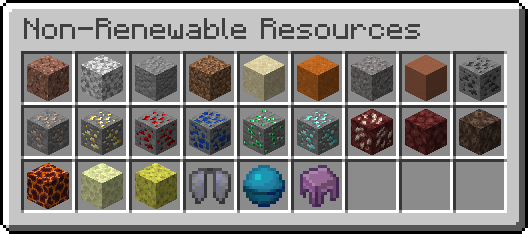
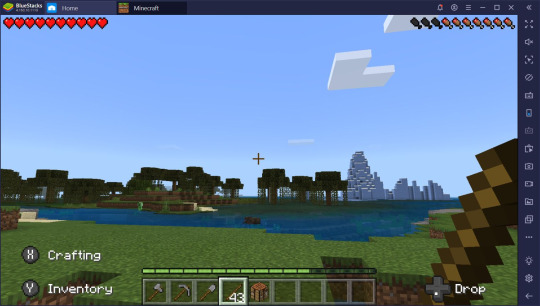
𝔹𝕖𝕟𝕖𝕗𝕚𝕥𝕤 𝕠𝕗 𝕋𝕖𝕒𝕔𝕙𝕚𝕟𝕘 𝕒𝕟𝕕 𝕃𝕖𝕒𝕣𝕟𝕚𝕟𝕘
It might shock you due to the design of the game but there are various benefits that can be obtained from playing the game!
Creating a drive for students to meaningful learning. Students ranging from kids to adults can explore real-world issues in immersive, imaginative world.
Helps prepare students for the digital future as technologies modernizes. As the world evolves into advanced, this helps them to have a full understanding with computational thinking with in-game coding and curriculum.
Develops student's social-emotional skills through a variety of gameplay. This helps build the value of empathy in a person and students can learn digital citizenship at the same time.
Other than a survival game, students can also use the application in the comfort of their home to learn, i.e. this is a photo of a chemistry periodic table.
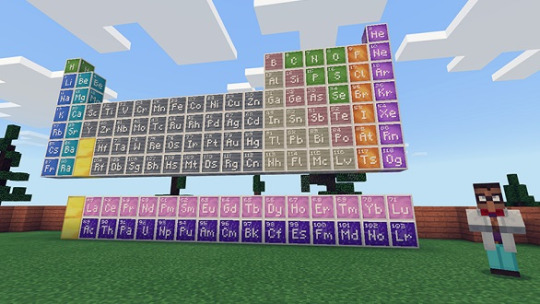
In my opinion, games like Minecraft allows student to explore and express creativity which can be good for learning. It stimulates critical thinking, problem-solving, and system thinking (learning how things work together). Minecraft's focus on building can reinforce geometry concepts, as it strengthens players' logic skills, creativity, and even collaboration. But the educational value of any piece of media has a lot to do with who's guiding the learning.
#video games#minecraft#education#educationandlearning#feedback#assignment#educationreview#technologicalinnovation
0 notes
Link
#aiart#aiconceptart#beautiful#beauty#braincapaugmentation#captivating#cognitivepotentialenhancement#cyberneticenhancements#cybilancyborgatriana#digitalart#human-machinesynergy#leonardoai#man-machineinterface#mechanicalorganreplacement#meteorshowerimpact#stunning#technologicaladvancement#technologicalinnovation#xzendor7#xzendor7aiart#xzendor7digitalart
0 notes
Text
Dive into the captivating realm of Dubai's real estate future, where architectural marvels, sustainable living, technological innovations, and cultural diversity converge. Discover how the top real estate company in Dubai is shaping this dynamic landscape, creating a symphony of luxury, progress, and possibility.
#DubaiRealEstate#FutureOfRealEstate#TopRealEstateCompanyDubai#Sustainability#TechnologicalInnovation#ArchitecturalWonders#SmartHomes#CulturalDiversity#CommercialDevelopments#LuxuryLiving#EvolutionOfDubaiRealEstate
1 note
·
View note
Text
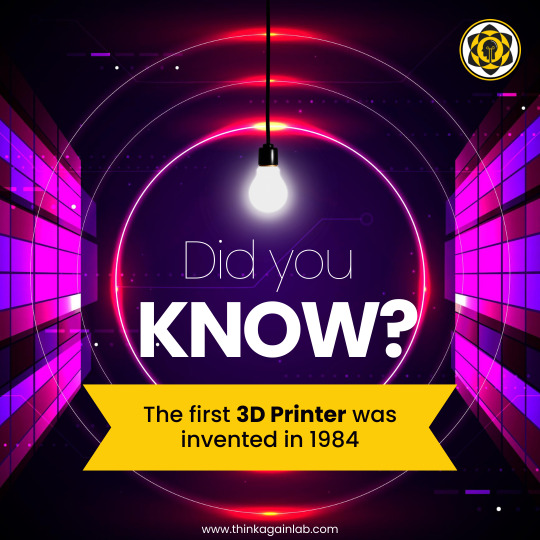
Ready to dive into the revolutionary world of 3D printing? Register now to trace the incredible journey that began in 1984. Laying the foundation for a technological marvel that continues to shape the future!
Register Now
For more information, you can visit our Instagram & Facebook, Or Contact us: +91 7908369443
#RegisterNow#ThinkAgainLab#3DPrintingRevolution#TechnologicalInnovation#IncredibleInventions#TechTimeTravel#ExploringThePast#PrintingTheFuture#TechEnthusiasts
1 note
·
View note
Text
Poultry Farming Qualitative Production and Challenges
Growth in Online Poultry Market, Technological Innovations, Sustainability and Meat Consumption, AI Revolution in Poultry Industry, Regulations, Market Demands….
What about Synthetic Chinese Origin Poultry Feed Supplements?
Unveiling the Future of Poultry Farming: Insights from Mr. OP Singh's Seminar"
"Navigating Challenges & Innovations in Poultry Industry: Mr. OP Singh's Analysis"
"AI Revolutionizing Poultry Farming: Mr. OP Singh's Seminar Breakdown"
"Sustainable Solutions in Poultry Farming: Mr. OP Singh's Expert Talk"
"Decoding Market Trends: Mr. OP Singh's Seminar on Poultry Industry Dynamics"
"Exploring Synthetic Feed Supplements: Mr. OP Singh's Insights & Implications"
youtube
#Opsinghspeech#technicalseminar#poultryindia#nashik#poultryindia2024venue#poultryequipments#poultryofyoutube#poultryfarmingbusiness#poultryfarmers#poultryshow#poultryfeeder#poultrylife#poultryindiatv#profitinpoultrymarketing#Poultryfarming#Poultryindustry#Qualitativeproduction#Challenges#Onlinepoultrymarket#Technologicalinnovations#Sustainability#Meatconsumption#AIrevolution#Regulations#Marketdemands#Syntheticfeedsupplements#Poultryindiatechnicalseminar#Agriculture#Livestockmanagement#Youtube
0 notes
Text
Rising Demand and Technological Innovations Propel Air Purification Sterilizers Market to New Heights
The air purification sterilizers market is experiencing a notable upward trajectory, propelled by a confluence of factors. Heightened consciousness regarding health and a burgeoning preference for cleaner air are serving as primary drivers, igniting significant consumer demand. Moreover, technological innovations, particularly the advent of smart air purifiers equipped with advanced features, are amplifying the market's appeal. Concurrently, governmental regulations aimed at enhancing air quality standards are further catalyzing growth within the industry. The escalating levels of air pollution, coupled with mounting apprehensions regarding airborne diseases, are also significantly contributing to the market's expansion, as individuals seek effective solutions to safeguard their respiratory well-being. These multifaceted dynamics underscore a robust and promising outlook for the air purification sterilizers market, positioning it as a pivotal player in addressing contemporary health and environmental concerns.

#CleanAir#HealthAwareness#AirPurification#SterilizersMarket#EnvironmentalConcerns#TechnologicalInnovations#AirQuality#PollutionControl#SmartDevices#HealthWellness
1 note
·
View note
Link
Explore the basic differences between 5G and 4G technologies in this informative article. Learn about the benefits of speed, latency, and impact on the industry.
0 notes
Text
Building a Better World: Davos Unites Leaders for Climate, Equality, and Innovation
#cleanenergyresearchanddevelopment #climatechange #COVID19pandemic #creativity #cuttingedgetechnology #Davos #economicinequality #economicrecovery #multilateralism #NetZeroCarbonCities #positivechange #sustainablefuture #technologicalinnovation #TrillionTrees #vaccinedistribution #virtualparticipation #womenseconomicempowerment #WorldEconomicForum
#Business#cleanenergyresearchanddevelopment#climatechange#COVID19pandemic#creativity#cuttingedgetechnology#Davos#economicinequality#economicrecovery#multilateralism#NetZeroCarbonCities#positivechange#sustainablefuture#technologicalinnovation#TrillionTrees#vaccinedistribution#virtualparticipation#womenseconomicempowerment#WorldEconomicForum
0 notes
Text
High-Temperature Heater Wires Decoded: Applications, Materials, and Considerations
High-temperature heater wires are pivotal players in industrial processes, scientific breakthroughs, and technological innovations. These specialized wires, also known as heating elements or resistance wires, possess the remarkable ability to withstand extreme temperatures while generating precise heat. Their applications span across industries - from metallurgy to medical equipment and beyond. In this blog, we explore the significance of high-temperature heater wires, their diverse applications, and key considerations for optimal use. Whether in aerospace engineering or energy generation, these wires shape the landscape of controlled heat for a multitude of purposes.

#HighTemperatureHeaterWires#HeatGeneration#IndustrialApplications#ScientificExploration#TechnologicalInnovations#HeatingElements#PrecisionHeat#MaterialsSelection#TemperatureControl#EfficiencyUnderExtremeConditions#AerospaceEngineering
1 note
·
View note
Text
Blinken and Bahraini Crown Prince Foster Security and Prosperity

The Exact Transcript of the Meeting in Washington
SECRETARY ANTHONY BLINKEN: Crown Prince Salman, Your Royal Highness, welcome back to the State Department, to Washington, a city that I know you know very well from your student days just up the road at American University. We’ve had the chance to discuss that before. Things have changed a little bit on campus, but we’re delighted to have you back in Washington.
And to the National Security Advisor Sheikh Nasser, to my friend the Foreign Minister Al-Zayani, to the entire delegation from Bahrain: Welcome, welcome, welcome.
This moment reflects a great deal of hard work from our teams, and I want to applaud as well all of my colleagues on the American side for the work that they’ve put into this and, I believe, helps us define the very promising work ahead. As both a major non-NATO ally and a major security partner, Bahrain is already one of the United States’ longest-standing and closest partners in the Middle East. In today’s meeting, we’ll discuss how to deepen our strategic partnership, including through the framework that brings us here today: the Comprehensive Security Integration and Prosperity Agreement.
This agreement deepens our cooperation in three very important ways.
First, it expands our security and defense collaboration. For more than 25 years, of course, Bahrain has hosted the U.S. Navy’s Fifth Fleet, and we stand shoulder to shoulder in our mission to secure critical shipping lanes that sustain the entire global economy. This agreement will strengthen coordination between our armed forces and the integration of our intelligence capacities, allowing us to even better deter and respond to threats as they arise.
Second, it enhances our economic relationship. Since 2006, our free trade agreement has more than tripled trade and investment to about $3 billion a year. Today’s agreement builds on this, in part by identifying new investment opportunities for the private sector partners in the United States.
And third, at a moment when technology holds so much potential to better our lives, this agreement advances scientific and technical cooperation between our countries, including through increased information sharing and exchanges between our people. And already we’re collaborating in areas like health security and digital technology. I think we’ll see with today’s signing all of this become elevated. We’ll start the process of working together on renewable energy, on carbon capture technologies, and other cutting-edge endeavors.
This agreement is also the first binding U.S. international agreement of its kind to promote cooperation in developing and deploying trusted technologies, which are vital to protecting our critical systems and our peoples’ privacy – all of this from bad actors.
But I think when you step back, at the heart of the agreement is a shared goal: working together to build a region that is more secure, that’s more prosperous, and that’s more connected to the world economy. We’re looking forward to using this agreement as a framework for additional countries that may wish to join us in strengthening regional stability, economic cooperation, and technological innovation.
In our meeting, Your Royal Highness, I also very much look forward to discussing ways to continue advancing regional integration – something that Bahrain has been in the forefront of doing. This is the third anniversary, this week, of the Abraham Accords through which Bahrain became one of the first countries to normalize relations with Israel. Bahrain has continued its leadership through the Negev Forum. The foreign minister and I were participants in its first – in its first meeting. Our two countries are co-leading efforts in the forum to strengthen cooperation on regional security and health, another very important item on our agenda today.
We’ll also continue our dialogue on the full range of human rights issues which are a core pillar of the United States foreign policy. That includes areas like combating trafficking in persons, where Bahrain continues to make important headway. It also includes ensuring that fundamental freedoms are protected, which contributes to Bahrain’s progress.
For more than 130 years now, Bahrain and the United States have forged a partnership that has evolved to meet the challenging needs of our people and the changing needs of our people, from Americans building a school and a hospital in Manama in the early 20th century, to the start of our diplomatic relations more than five decades ago, to our troops serving side by side in Operation Desert Storm in the 1990s.
Today’s agreement that we’re about to sign builds on that very proud and important history. It ensures that this vital relationship between our countries will continue to do what it needs to do, which is deliver for our people and, I believe, help build a more positive future for people throughout the region.
So with that, again, it’s wonderful to have you here. Let me turn this over to you.
CROWN PRINCE AL KHALIFA: Thank you. Thank you, Mr. Secretary. Ladies and gentlemen, it is a great honor and a privilege to be standing in front of you on this historic day. I have witnessed the closeness of our two countries and I have understood through deed and word what it has taken to get us to this point.
Long ago, over 130 years ago, a group of missionaries came and established the first – we could call it hospital, but I think it was really just a – it was a small little health center that did become, in fact, a hospital in 1903. We were the first forward operating base for the U.S. Navy in the Middle East, in the Kingdom of Bahrain – 1948, I believe. We have consistently been the first to promulgate the free trade agreement that we did, as the first GCC country to sign it, and we are the first country to create the U.S. trade zone that we believe is going to be the foundation of something that we are both so passionately working towards.
You articulated exactly what this agreement is about. It is of, I believe, a sense of imperativeness, a need. The world today is faced by a number of choices, people are faced by a number of choices: either the rise of authoritarianism or the growth of libertarianism. And the international rules-based order that manifested itself in the early 19th century was the foundation for the freedom of trade, of the movement of ideas, of people all over the world, and we’re all beneficiaries of that. And those common values – the values of a Bedouin in the desert of Arabia who could pick up his house and move if he didn’t like the level of rainfall he had or something – is essentially the freedom to go where one wants to go, to live how one wants to live, and to build a future for one’s children that is hopefully brighter than the one that they lived.
This agreement, by focusing not only on security and defense, which is essential, but also on economy – on the economy, on people, and on technology, will be the foundation for a new global architecture, I believe – as it’s open-ended, it’s an open – it’s an open agreement; we will be welcoming more members, hopefully – that I think is as significant as the decisions that were taken after many of the global upheavals historically.
So we are setting sail confidently. We are reaffirming our direction. And I couldn’t be more honored on behalf of his majesty to be here to sign this agreement on this day with you in Washington, D.C. Thank you, Mr. Secretary.
SECRETARY ANTHONY BLINKEN: Thank you.
(Applause.)
MODERATOR: Today the United States and the Kingdom of Bahrain are signing the Comprehensive Security Integration and Prosperity Agreement. This agreement will enhance cooperation across a wide range of areas, from defense and security to emerging technology, trade, and investment. It marks the latest development in the United States’ enduring commitment to Bahrain and the region in support of peace.
SECRETARY ANTHONY BLINKEN: Well, we have a pen that doesn’t want to cooperate, so I’m going to switch. (Laughter.)
MODERATOR: And that concludes our signing ceremony.
SECRETARY ANTHONY BLINKEN: One more second. One more.
CROWN PRINCE AL KHALIFA: We’ve got one more.
(Chit-chat.)
CROWN PRINCE AL KHALIFA: Everything is in quadruple.
SECRETARY ANTHONY BLINKEN: You’re a lot faster than I am.
(The agreement was signed.)
CROWN PRINCE AL KHALIFA: Perfect.
SECRETARY ANTHONY BLINKEN: Now it’s done. (Applause.) Well done, everyone. Thank you.
Sources: THX News & US Department of State.
Read the full article
#AntonyBlinken#CrownPrinceSalman#EconomicRelationship#HumanRightsBahrain#MiddleEastCooperation#ProsperityAgreement#RegionalStability#SecurityIntegrationAgreement#technologicalinnovation#U.S.-BahrainPartnership
0 notes
Text
The Transformative Impact of Recent Developments on the Crane Market

The crane market has experienced significant growth and innovation in recent years, driven by increasing demand for advanced lifting solutions across various industries such as construction, energy, and infrastructure development. Integrating cutting-edge technology and safety features into new crane models undoubtedly shapes the industry’s future. In this article, we delve into the recent developments in the crane market and analyze their impact on market size, growth, opportunities, drivers, and challenges.
Recent Developments:
The continuous evolution of the crane market can be primarily attributed to the launch of groundbreaking products by leading manufacturers. For instance,
In February 2023, ACE unveiled India's first electric crane with a remarkable lifting capacity of 180 tonnes. This innovative crane is designed for rough terrain operations and has many safety features. Such advancements are expanding the market size and creating new opportunities for businesses operating in the crane industry.
Another notable development occurred in October 2022 when Terex Cranes introduced the CTT 222-10 Flat Top Tower Crane. This state-of-the-art crane prioritizes safety, boasting an adjustable slewing seat and an integrated heating and cooling system to keep operators comfortable and focused on their tasks. The introduction of such technologically-advanced cranes is a testament to the market growth, driven by both customer demands and industry competition.
In the same vein, Manitowoc Cranes, a subsidiary of Manitowoc Company Inc., secured an order for 12 Potain Igo MA 21 and three Igo 32 self-erecting cranes from Dutch crane manufacturing, sales, and rental company Montarent in October 2022.
This deal highlights the market opportunities for companies continually developing and refining their product offerings.
Market Analysis
The recent developments in the crane market have prompted experts to conduct a comprehensive market analysis to gauge the industry's current state and future trajectory. Factors such as increasing urbanization, growth in the construction industry, and the need for efficient material-handling solutions have contributed to the market's expansion. Furthermore, the demand for energy-efficient and environmentally-friendly cranes has accelerated market growth, propelling manufacturers to explore new technological frontiers.
Market Drivers – Pushing the Boundaries of Innovation
The crane market's growth can be attributed to several market drivers, including the need for advanced lifting solutions, stringent safety regulations, and the rapid development of infrastructure projects worldwide. Additionally, implementing automation and IoT technologies in crane systems has enhanced their efficiency, safety, and ease of operation, further fueling market growth.
Market Challenges – Overcoming Obstacles for Continued Growth
Despite the crane market's promising prospects, it faces a few challenges that must be addressed to sustain growth. Some of these challenges include high initial investments, skilled labor shortages, and fluctuations in raw material prices. To overcome these hurdles, companies are investing in research and development to innovate cost-effective and user-friendly crane solutions catering to diverse applications.
Future of Crane Market with Recent Developments:
The recent developments in the crane market are expected to propel the industry forward, with market size, growth, and opportunities continuing to expand. As the demand for advanced, safe, and efficient lifting solutions intensifies, we can anticipate further technological breakthroughs that will revolutionize businesses and industries.To gain a deeper understanding of the crane market and its potential, DataM Intelligence offers a comprehensive market report, which provides valuable insights into market trends, competitive landscape, and future growth prospects.
To access this invaluable resource, request a sample report from DataM Intelligence today.
#CraneMarket#RecentDevelopments#TechnologicalInnovations#SustainableSolutions#InfrastructureDevelopment#SafetyFirst#MarketExpansion#Globalization#ConstructionIndustry#HeavyIndustry#Innovation
0 notes